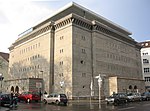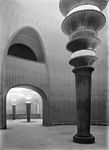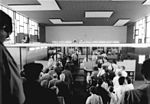International Peace Bureau

The International Peace Bureau (IPB) (French: Bureau international de la paix), founded in 1891, is one of the world's oldest international peace federations. The organisation was awarded the Nobel Peace Prize in 1910 for acting "as a link between the peace societies of the various countries". In 1913 Henri La Fontaine was also awarded the Prize "[For his work as] head of the International Peace Bureau". As of 2012, eleven other Nobel Peace Prize laureates have been members of the IPB.Its membership consists of 300 organizations in 70 countries. IPB's headquarters is located in Berlin, Germany with offices in Barcelona, Spain, and Geneva, Switzerland. Prior to 2017, the headquarters was based in Geneva. Its main programmes are the Global Campaign on Military Spending (GCOMS) and disarmament for sustainable development, which focuses both on nuclear and conventional weapons, as well as biological weapons, landmines, and small arms.IPB holds Consultative Status with the United Nations Economic and Social Council (ECOSOC) and associate status with the United Nations Department of Global Communications.IPB was founded under the name Permanent International Peace Bureau (Bureau International Permanent de la Paix). From 1912 onward it used the name International Peace Bureau. Between 1946 and 1961, it was known under the name International Liaison Committee of Organizations for Peace – ILCOP (Comité de liaison international des organisations de paix – CLIOP).
Excerpt from the Wikipedia article International Peace Bureau (License: CC BY-SA 3.0, Authors, Images).International Peace Bureau
Marienstraße, Berlin Mitte
Geographical coordinates (GPS) Address Nearby Places Show on map
Geographical coordinates (GPS)
| Latitude | Longitude |
|---|---|
| N 52.522454 ° | E 13.383641 ° |
Address
Marienstraße 19/20
10117 Berlin, Mitte
Germany
Open on Google Maps









